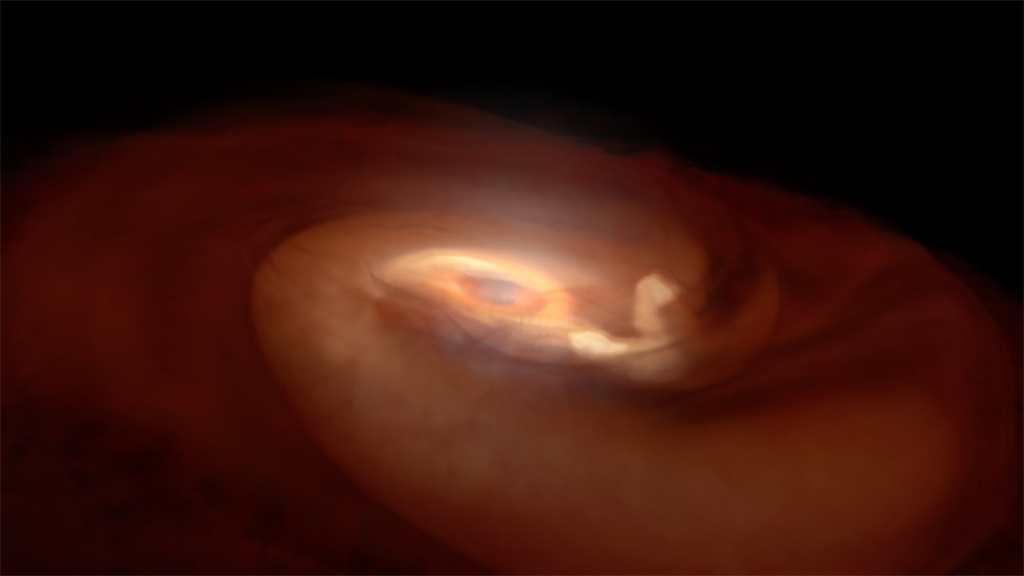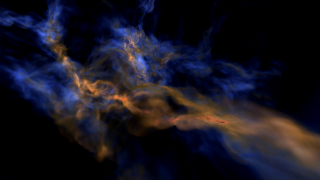Planets and Moons
ID: 11541

Ancient civilizations observed Jupiter in the night sky, but humanity still doesn’t completely understand how it and other giant gas planets are born. One theory is that they began as rocky planets that slowly accumulated thick atmospheres and expanded into big gaseous bodies over millions of years. But there might be a faster route. Solar systems grow from protoplanetary disks, a large stew of primordial gases surrounding a massive solar seed called a protostar. Over thousands of years, the protostar’s gravity sucks in material from the disk’s outer reaches. As more gas swirls inward, it’s packed into dense spiral arms. While the protostar will eventually consume the gas closest to it, material farther away may spin off and condense into a Jupiter-like planet. Watch the video to see this process unfold.



Creating Gas Giants




Related Story
Story Credits
Visualizers/Animators:
Donna Cox (AVL NCSA/University of Illinois)
Stuart Levy (AVL NCSA/University of Illinois)
Matthew Hall (AVL NCSA/University of Illinois)
Robert Patterson (AVL NCSA/University of Illinois)
A. J. Christensen (AVL NCSA/University of Illinois)
Alex Betts (AVL NCSA/University of Illinois)
Producers:
Michael McClare (HTSI)
Donna Cox (AVL NCSA/University of Illinois)
Lead Scientists:
Aaron C. Boley (University of Florida)
Alexei Kritsuk (University of California, San Diego)
Michael Norman (University of California, San Diego)
Lead Writer:
Matt Davenport (USRA)
Donna Cox (AVL NCSA/University of Illinois)
Stuart Levy (AVL NCSA/University of Illinois)
Matthew Hall (AVL NCSA/University of Illinois)
Robert Patterson (AVL NCSA/University of Illinois)
A. J. Christensen (AVL NCSA/University of Illinois)
Alex Betts (AVL NCSA/University of Illinois)
Producers:
Michael McClare (HTSI)
Donna Cox (AVL NCSA/University of Illinois)
Lead Scientists:
Aaron C. Boley (University of Florida)
Alexei Kritsuk (University of California, San Diego)
Michael Norman (University of California, San Diego)
Lead Writer:
Matt Davenport (USRA)
Please give credit for this item to:
NASA's Goddard Space Flight Center
Cover image courtesy of ESO/L. Calçada
NASA's Goddard Space Flight Center
Cover image courtesy of ESO/L. Calçada
Short URL to share this page:
https://svs.gsfc.nasa.gov/11541
Keywords:
SVS >> App
NASA Science >> Planets and Moons
https://svs.gsfc.nasa.gov/11541
Keywords:
SVS >> App
NASA Science >> Planets and Moons








